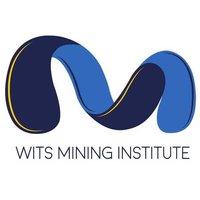The South African mining sector
Now, more than ever, South Africa needs a competitive mining industry. This will only be possible if science and technology plays the quintessential role of changing the cost and exploitation horizons of the sector.
Statistics from the South African Department of Mineral Resources and the US Geological Survey indicate that South Africa possesses ore reserves amounting to a value of more than US$2.5 trillion[1], with 16 commodities ranked in the Top 10 internationally. South Africa has the largest reserves of Platinum-group metals (PGMs; 88%), Manganese (80%), Chromite (72%) and Gold (13%) known reserves in the world. It is ranked second in Titanium minerals (10%), Zirconium (25%), Vanadium (32%), Vermiculite (40%) and Fluorspar (17%). In addition, the country contains 17% of the world’s antimony reserves.
South Africa is currently ranked 5th internationally in terms of mining contribution to GDP[2] and the country is ranked in the top three globally in terms of production of PGMs (59%), Vanadium (25%), Ferrochrome (39%), Alumino-silicates (60%), Vermiculite (35%), Zirconium (32%), Titanium minerals (19%), Manganese ore (17%) and Antimony (2%), with its Gold (8%), Coal[3] (4%), Iron ore (4%), Ferro-silicon, Silicon metal and Fluorspar ranked in the Top Ten globally. PGMs, Gold, Iron ore and Coal alone account for 82% of sales and 38% (R282 billion) of exports.
Despite this abundance in natural mineral resources, South African mining faces a systemic crisis. Local gold production has collapsed from 605 tonnes in 1994 to 133 tonnes (22% of it) in 2014, despite a 218% boom in the gold price during this time and South African gold reserves still ranked No 1 internationally (by value US$151bn). In 1994 gold mines accounted for 392 227 jobs. By 2014 this had fallen to 119 075, a loss of 273 152 jobs in just 20 years. This is shocking, but still emphasises the potential of gold mining as an employer where, despite a collapse in output, still employs 30% of the 1994 numbers. The main explanation for the collapse of gold mining in South Africa is margin squeeze as a result of cost increases at depth. Costs have increased because the country’s research, development, technology and innovative systems and institutions, which historically continuously pushed and expanded the limits of knowledge in domestic mining techniques, have been allowed to decay and wither. As a result, the South African mining sector no longer has access to world class R&D and intellectual property which would allow it to continue to be internationally competitive and a driver of existing and new industrialisation opportunities.
To re-invigorate the South African mining sector and to harness the plethora of (existing and new) up and down stream opportunities for industrial and manufacturing growth, it is crucial for the country to create the technologies and mining methods to push mining deeper in a commercially viable manner. Now, more than ever, South Africa needs a competitive mining industry. This will only be possible if science and technology plays the quintessential role of changing the cost and exploitation horizons of the sector. None of the existing mining stakeholders (publically funded research institutions, private sector companies, universities, unions or government) have the scale to impact the situation alone over the long run. To achieve this, a critical mass of science and knowledge to push the frontiers of mining will require a national effort consisting of deep partnerships and collaborations across institutions and industries.
[1] Mining and minerals in South Africa. Available from http://www.southafrica.info/business/economy/sectors/mining.htm#.V6vx0Y9OKUk, accessed 11/08/2016.
[2] Pocket Guide to South Africa 2012/13: Mineral Resources. Available from http://www.gcis.gov.za/sites/www.gcis.gov.za/files/docs/resourcecentre/pocketguide/2012/15%20Mineral%20Resources.pdf, accessed 11/08/2016.
[3] Coal’s prominence as a reliable energy generation option, and the need for more coal mining research, is clearly articulated in the key-note presentation by Professor Emeritus Huw Phillips’ at the CoalTech Annual Colloquium on the 9th of August 2016. See Research News Section.

